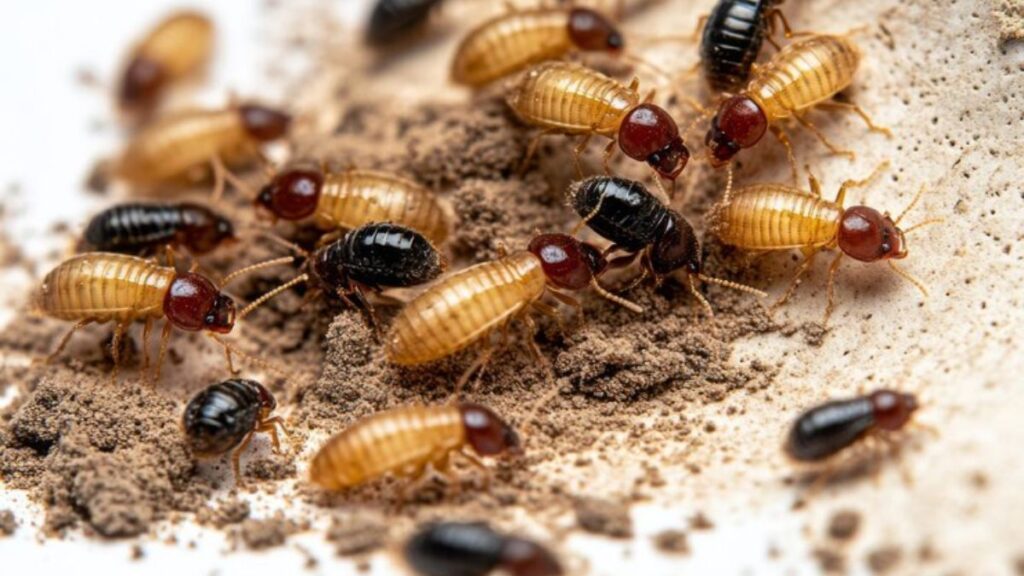Pests activity isn’t random it follows a rhythm as predictable as the calendar. Just like humans swap out wardrobes and change routines with the seasons, insects and rodents respond to temperature, moisture, and light cycles.
Understanding this seasonal behavior is one of the smartest ways to prepare your home—and your mindset—for year-round pest control. From spring swarms to winter invasions, here’s how each season brings its own threats and what you can do to stay ahead.
Spring: The Awakening Begins
As temperatures rise and moisture returns, so do pests. Spring is the most active reproductive season for many common invaders.
Watch Out For:
- Ants: Workers emerge in search of food and water.
- Termites: Swarming season begins, especially after rain.
- Mosquitoes: Begin breeding in standing water left by early rains.
- Spiders: Come out of hiding to chase the insect resurgence.
What to Do:
- Repair window screens and door seals.
- Trim vegetation touching your home.
- Check for signs of termite swarms around baseboards or light fixtures.
- Eliminate sources of standing water around your property.
This is also a great time to schedule your first pest control inspection of the year. A proactive spring visit with Agile Pest Control helps identify new risks before colonies get established.
Summer: The Infestation Window
By summer, pests are in full swing. Warmth speeds up reproduction cycles, and food is abundant—making infestations faster and harder to detect early.
Watch Out For:
- Wasps and bees: Build nests under eaves or in sheds.
- Cockroaches: Thrive in warm, humid kitchens or basements.
- Rodents: Venture indoors for food as outdoor sources dwindle.
- Bed bugs: Spread through travel and increased guest activity.
What to Do:
- Inspect outdoor furniture and play equipment for nests.
- Deep clean pantries, behind appliances, and basement corners.
- Use sealed containers for food and pet supplies.
- Vacuum luggage and wash clothes after trips.
This season often requires the most aggressive control tactics due to the fast breeding cycles of summer pests. Don’t wait for problems to multiply.
Fall: The Migration Begins
As temperatures drop, pests start scouting for warm places to overwinter. Your home—heated, dark, and quiet in some areas—is a perfect candidate.
Watch Out For:
- Spiders and centipedes: Sneak inside looking for shelter.
- Rodents: Seek nesting sites in attics and garages.
- Boxelder bugs and stink bugs: Accumulate on sunny walls before sneaking indoors.
- Termites: Underground activity continues if soil stays moist.
What to Do:
- Seal exterior cracks, vents, and utility pipe gaps.
- Store firewood at least 20 feet from the house.
- Clean and organize storage areas to eliminate nesting spots.
- Install door sweeps and weather stripping to block small entrances.
Autumn is your final window to prepare before winter makes pest access even harder to detect. Prevention now pays off later.
Winter: The Quiet Invasion
Pest activity might seem minimal in winter, but appearances can be deceiving. Many species slow down—not shut down—and may already be nesting inside your home.
Watch Out For:
- Mice and rats: Stay active in attics, walls, and basements.
- Cockroaches: Remain in warm areas near appliances or pipes.
- Bed bugs: Thrive in heated environments with continued human presence.
- Silverfish and earwigs: Migrate indoors seeking warmth and moisture.
What to Do:
- Inspect your attic and insulation for droppings or nests.
- Keep food tightly sealed—rodents eat a lot, even in winter.
- Reduce indoor humidity with dehumidifiers.
- Monitor traps and baits in high-risk areas.
This season isn’t the end of pest activity—it’s a test of your year-round efforts. Winter infestations often mean problems that started earlier and went unnoticed.
Don’t Let the Calendar Dictate Control
While each season brings unique challenges, pests don’t wait for specific dates. Climate shifts, home repairs, travel, and landscaping can all impact when and how pests appear.
Maintaining a consistent pest control strategy year-round is more effective than reacting to sudden problems. Prevention is not seasonal—it’s structural.
This is why many homeowners rely on scheduled quarterly visits from professionals. Agile Pest Control offers inspections that align with the seasons and adapt treatments based on your environment, not just the weather.
Tailoring Strategies to Your Climate
Seattle’s damp, cool climate influences pest cycles. Moisture-loving insects like termites and silverfish thrive in basements or crawlspaces. Extended wet seasons also create longer breeding windows for mosquitoes and ants.
Localized approaches are key. Generic pest control solutions often miss the nuance of regional behavior and environmental triggers. Your city’s climate should influence:
- The timing of inspections
- The focus of exterior treatments
- The types of baits or traps used
Pest control, like gardening or HVAC maintenance, should be tailored to the rhythms of your area.
Final Thought: Don’t Be Caught Off Guard
If you’re only thinking about pests when you see them, you’re already behind. By understanding the seasonal ebb and flow of infestations, you shift from a reactive position to a proactive one.
You prepare differently. You look in the right places. You act before the problem multiplies.
Because pests might follow the calendar—but that doesn’t mean your prevention should wait for an appointment.
The smartest defense? A full-year mindset, backed by professionals who know your region and recognize the subtle signals before they become symptoms.
Agile Pest Control doesn’t just chase pests when they arrive. It helps you outsmart them before they know where to look.







